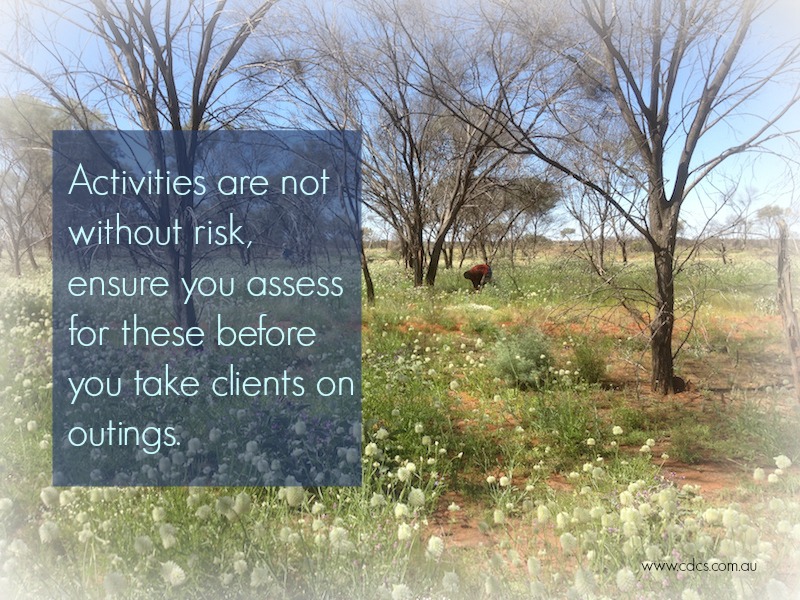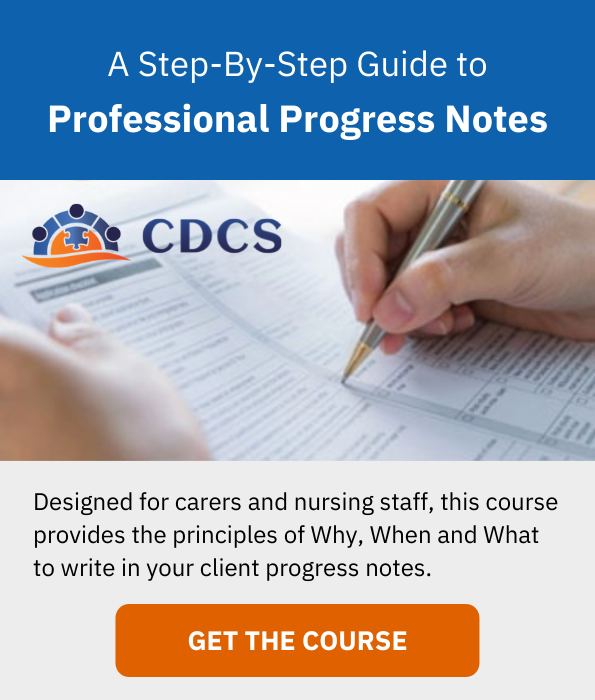We all want to have a bit of fun in our lives. Staying at home to keep safe isn’t really that much fun.
Sure we might not fall over or break a hip as my mother did recently, but it makes for a dull and uneventful life, a bit like sitting around waiting to die.

As we age however we may become more susceptible to injury or illness. Although we cannot eliminate all risk when participating in activities, or indeed life, we still want to make sure that we are not placing clients needlessly in the path of hazards. For this reason, when we plan activities for elderly clients we need to assess the activity for potential hazards and their associated risks.
Before we move into the whys and wherefores of an Activities Risk Assessment, let me take a moment to define the difference between hazards and risks, as sometimes the terms are used interchangeably. A hazard is something that can cause harm, such as a snake. The risk is that it will bite someone. Similarly, the sun can be a hazard and the accompanying risk is sunburn. So now we have an understanding of hazards and risks we can move on to why you should conduct an Activities Risk Assessment and how to do so.
An Activities Risk Assessment can support good client care.
As we noted previously, clients enjoy getting out and about or participating in activities at a centre, but all activities carry with them some form of risk. For example, creating Christmas decorations might include the use of scissors and paper and there is the potential for cuts from both of these resources to clients – admittedly the risks of serious injury are low and many organisations wouldn’t consider the potential for any harm or conduct a risk assessment.
But wait – what if we change the client base? If you had a client who could become violent if they feel frustrated or challenged, are you going to place other clients at risk by allowing this person access to sharp scissors? Likewise, a trip to the shops or a picnic might seem like a low risk activity for most of your clients, however, for those with dementia or with poor mobility, these activities may be riskier.
All activities therefore should be assessed not just in the context of the setting and the actual activity, but also against the clients who will be participating in the activity. But how do you do this in a practical and efficient way?
The best method is to use an Activities Risk Assessment template.
You may have a template that you use in your organisation – if not, you can download your own copy of a blank Risk Assessment template to use in your organisation by filling in your details at the bottom of the post.
The idea of a formal activities risk assessment is to consider all aspects of the activity; the location and any external impacts, clients attending the activity along with the activity itself. In reviewing the activity in this way, you are seeking to identify any hazards and their accompanying risks.
But what do you do if you identify something?
When reviewing identified risks, many organisations consult a “risk matrix”. You’ve probably seen these around the workplace, as they are a common workplace health and safety tool. The table considers any identified risk against the probability of the risk and the impact of the risk should it happen. Where the two variables intersect, a high, medium or low risk rating is generated.

For example, if an identified risk is likely to occur and it can result in death or serious injury it is ascertained as being a high risk. Conversely, if the chance of an identified risk actually occurring is combined with a small inconvenience to an individual the risk is considered to be low.
The next stage in the Activities Risk Assessment is identifying ways to mitigate the risk.
This means either eliminating or reducing the risk to an acceptable level. Sometimes small changes to the plan can minimise the risk. Perhaps you have a client with dementia and you are planning a picnic. You have identified that this person is prone to wandering off; to mitigate the risk you might include an additional staff member to work one on one with the person or invite their carer or family member to join them for the activity.
If a risk has been identified that cannot be reasonably mitigated, consider changing the activity, its location, the time of the activity or the individuals participating in the activity.
It stands to reason that a risk assessment should be carried out each time you plan on conducting a new activity.
However, a new assessment should also be conducted when any aspect of an existing or previously held activity changes: for example, the clients accessing the activity, the location and the time of day or time of year where relevant.
So next time you arrange an activity, stop and reflect on whether you have identified possible risks, the outcome for individuals participating in the activity and whether you need to make any changes to your plans to ensure the safety of all participants.
- 7 Steps For Getting Open Disclosure Right in Aged Care - November 5, 2024
- What's the deal with Care Coordination? - May 21, 2024
- When Cancer Gets Up Close and Personal… - May 14, 2024



